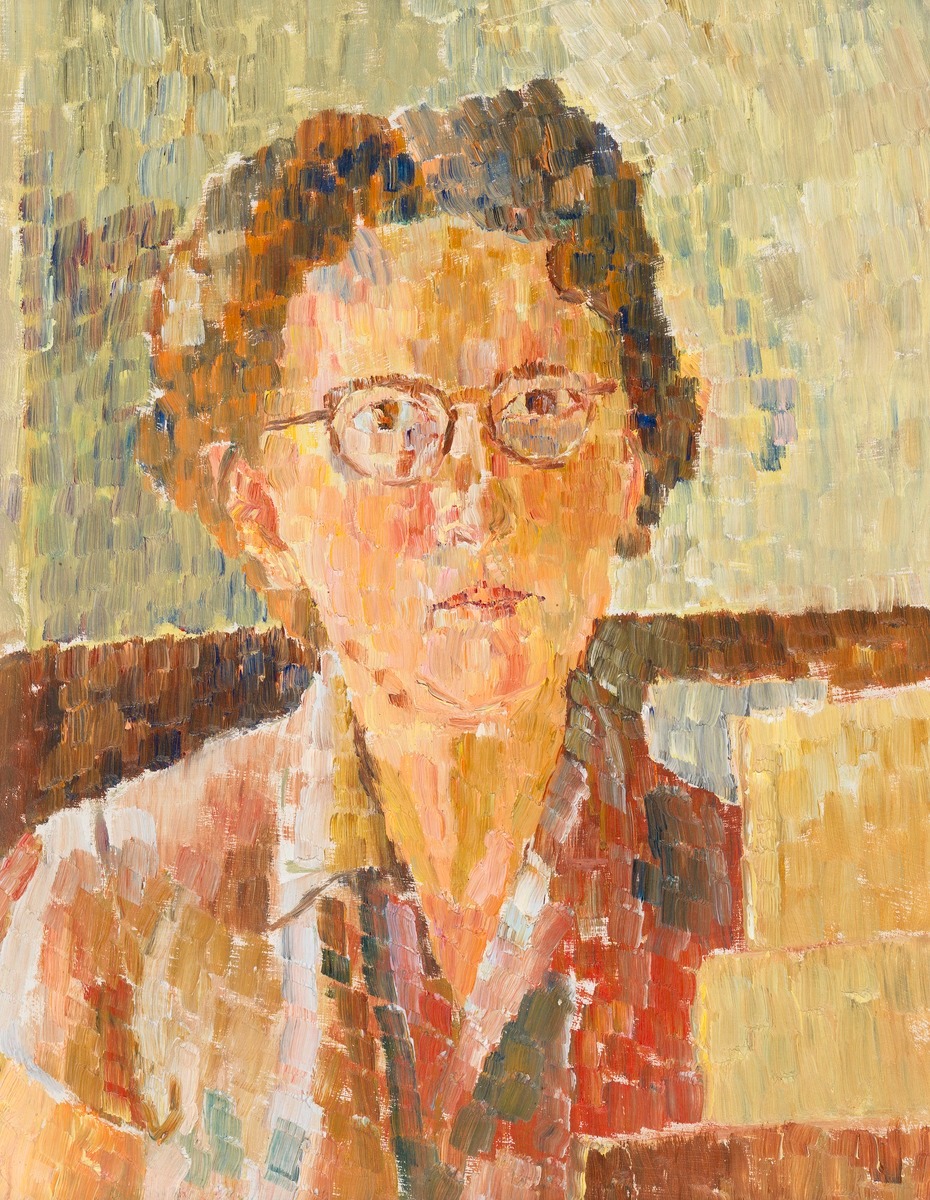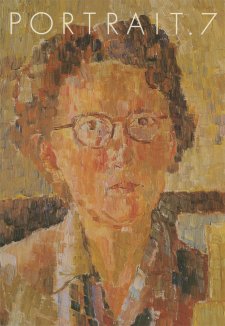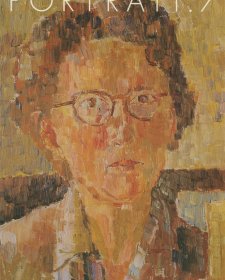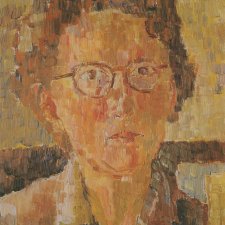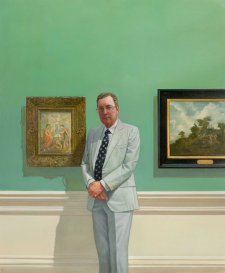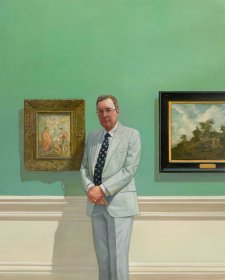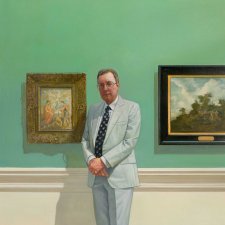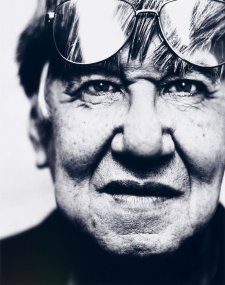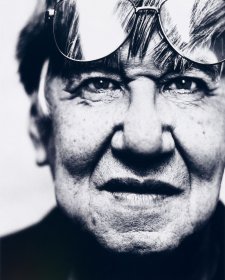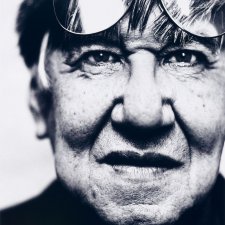The National Portrait Gallery's collection has recently been enriched with the purchase of a self-portrait by Grace Cossington Smith (1892-1984). Painted in 1948 the portrait depicts the artist seated by her work, her eyes gazing out, intently.
It is a supremely assured work in her late style in which short brushstrokes loaded with intricate mixtures of colour create complex colour arrangements. It is technically meticulous but the overall sense is one of freshness and fluidity.
All of Cossington Smith's work seems to be imbued with a sense of optimism. Her life was outwardly undramatic, but it was apparently a happy one and full of rich experience. She was born in 1892 to a well off English family who settled in Sydney. The Smiths of Turramaurra (from 1913) were not flamboyant and Grace remained unaffected throughout her life. An appreciation of nature, family and domestic routine was instilled in her throughout her childhood. Contented yet artistically ambitious, her determination was amply supported by her family; she was to have every opportunity available to a young woman of the time.
Cossington Smith showed artistic talent from early in her life and this led her as a young adult to study under Antonio Dattilo-Rubbo. (Dattilo-Rubbo is the subject of a fine bust by Arthur Murch in the National Portrait Gallery's collection). He was a tough master who demanded excellence in technique, and encouraged his students to develop their original voices. Cossington Smith flourished under Dattilo-Rubbo's teaching, though her original path eventually caused a split with him. In 1913 travel to England and Europe and further study at the Winchester School of Art were to inform her art practice and widen the painter's horizons.
By the early 1920s Cossington Smith was recognised as a modern artist. One writer in 1923 described her as the 'solitary post-impressionist in Australia', not so interested in the impressionist's concern with transitory effects of light and motion but more with structure and form.
Although Cossington Smith painted some city subjects - the crowd scene Rushing (1922) and her series on the Sydney Harbour Bridge under construction that culminated in The Bridge In-Curve (1930) - the most accessible subjects of home and family and the bush landscape at Turramurra became her most constant themes. Some of her best-known works are light-filled interiors painted later in her life as she became more and more reclusive, such as Interior in Yellow (1964). Central to her practice was her aim to address the spiritual in her subject matter, eloquently expressed in her statement: 'All form has an inarticulate grace and beauty; painting to me is expressing this form in colour - colour vibrant with light - but containing this other, silent quality which is unconscious, and belongs to all things created'.
Cossington Smith always lived as a single woman and remained in her family home at Turramurra until she moved to a nursing home at the end of her life. In 1973, Daniel Thomas organised a retrospective exhibition at the Art Gallery of New South Wales that revealed to a wider circle her greatness as a painter. In old age she indicated that her art was her passion; the duties of married life would have compromised her passion. Perhaps devotion to art is the theme of her self-portrait. We are presented with a face that is neither flattered nor masked. This portrait is of a woman in her mid-fifties, a painter.
This painting is an intimate expression of the artist and her inner world and demonstrates the technical mastery she reached in her creatively productive life. It adds to the National Portrait Gallery's growing collection of important Australian self-portraits. The Gallery's displays now include self-portraits by Nora Heysen, Herbert Badham, Arthur Boyd, George Lambert, Fred Williams and Janet Dawson.
